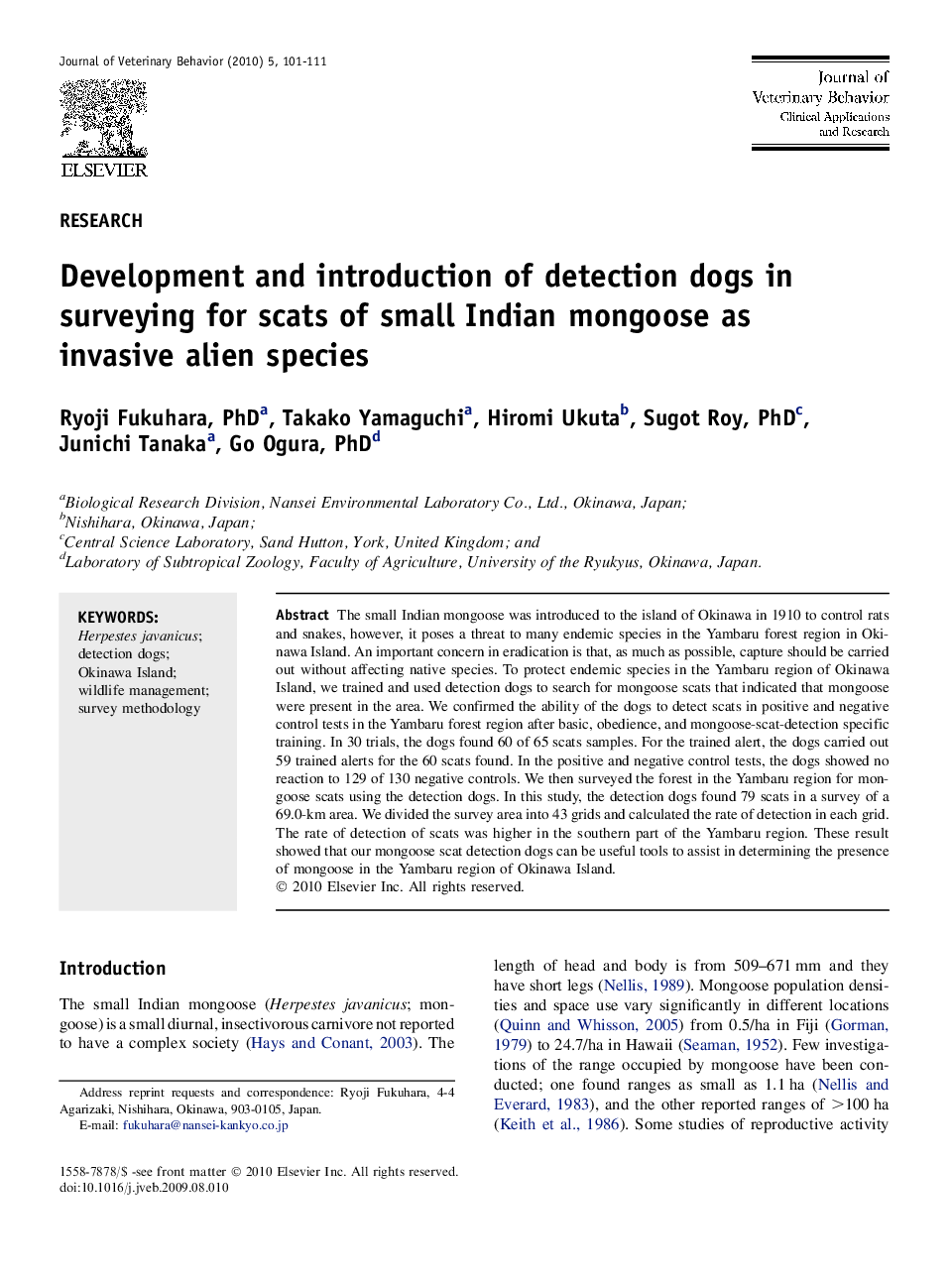| Article ID | Journal | Published Year | Pages | File Type |
|---|---|---|---|---|
| 2399508 | Journal of Veterinary Behavior: Clinical Applications and Research | 2010 | 11 Pages |
The small Indian mongoose was introduced to the island of Okinawa in 1910 to control rats and snakes, however, it poses a threat to many endemic species in the Yambaru forest region in Okinawa Island. An important concern in eradication is that, as much as possible, capture should be carried out without affecting native species. To protect endemic species in the Yambaru region of Okinawa Island, we trained and used detection dogs to search for mongoose scats that indicated that mongoose were present in the area. We confirmed the ability of the dogs to detect scats in positive and negative control tests in the Yambaru forest region after basic, obedience, and mongoose-scat-detection specific training. In 30 trials, the dogs found 60 of 65 scats samples. For the trained alert, the dogs carried out 59 trained alerts for the 60 scats found. In the positive and negative control tests, the dogs showed no reaction to 129 of 130 negative controls. We then surveyed the forest in the Yambaru region for mongoose scats using the detection dogs. In this study, the detection dogs found 79 scats in a survey of a 69.0-km area. We divided the survey area into 43 grids and calculated the rate of detection in each grid. The rate of detection of scats was higher in the southern part of the Yambaru region. These result showed that our mongoose scat detection dogs can be useful tools to assist in determining the presence of mongoose in the Yambaru region of Okinawa Island.
